The Structure of the Spanish School System
The Spanish school system has four stages, two of which are mandatory:
- Nursery and Preschool (Educación Infantil) – Optional
- Primary (Educación Primaria) – Mandatory
- Secondary Education (Educación Secundaria obligatory) – Mandatory
- Upper Secondary Education (Bachillerato) – Optional
The Three Types of Spanish Schools
Schools in Spain are generally divided into 3 main categories:
- State schools that are run and funded by the state (colegios públicos)
- Privately run schools funded mostly by the state (colegios concertados)
- Schools that are both privately run and privately funded (colegios privados)
According to the Ministry of Education, Social Policy and Sport, in 2008/09 state schools educated 67.4% of Spain’s pupils, private but state-funded schools educated 26.0%, and fully private schools educated 6.6%.
Students Belong to a Single Class
Students are placed into one class and have all their lessons with this same class (except for Bachillerato). In contrast, in the UK, some of the classes are mixed up depending on the subject. Also, for certain subjects, such as foreign languages and mathematics, classes can be turned into sets based on the academic ability of the students. In America, these may be known as honors level or AP classes.
The advantage of the Spanish approach is that the students become familiar with each other and very good friends. They are able to work through the school year together as a cohesive group. However, this means that the ability of students varies greatly within a class. Students that speak English at a high level will be in the same classroom learning lower-level English with those who really need to start with the basics.
One of your first tasks, when you arrive, will be determining what level of English each individual student is at. You will have the opportunity to diversify your teaching strategies to accommodate every type of student.
The Classroom Belongs to the Students
In the Spanish school system, each class of students has its own classroom. When class finishes, they stay in their room and the teachers move to their next lesson. This can be more efficient, however, at times students can be left alone when a teacher is running late and caught up with a previous lesson.
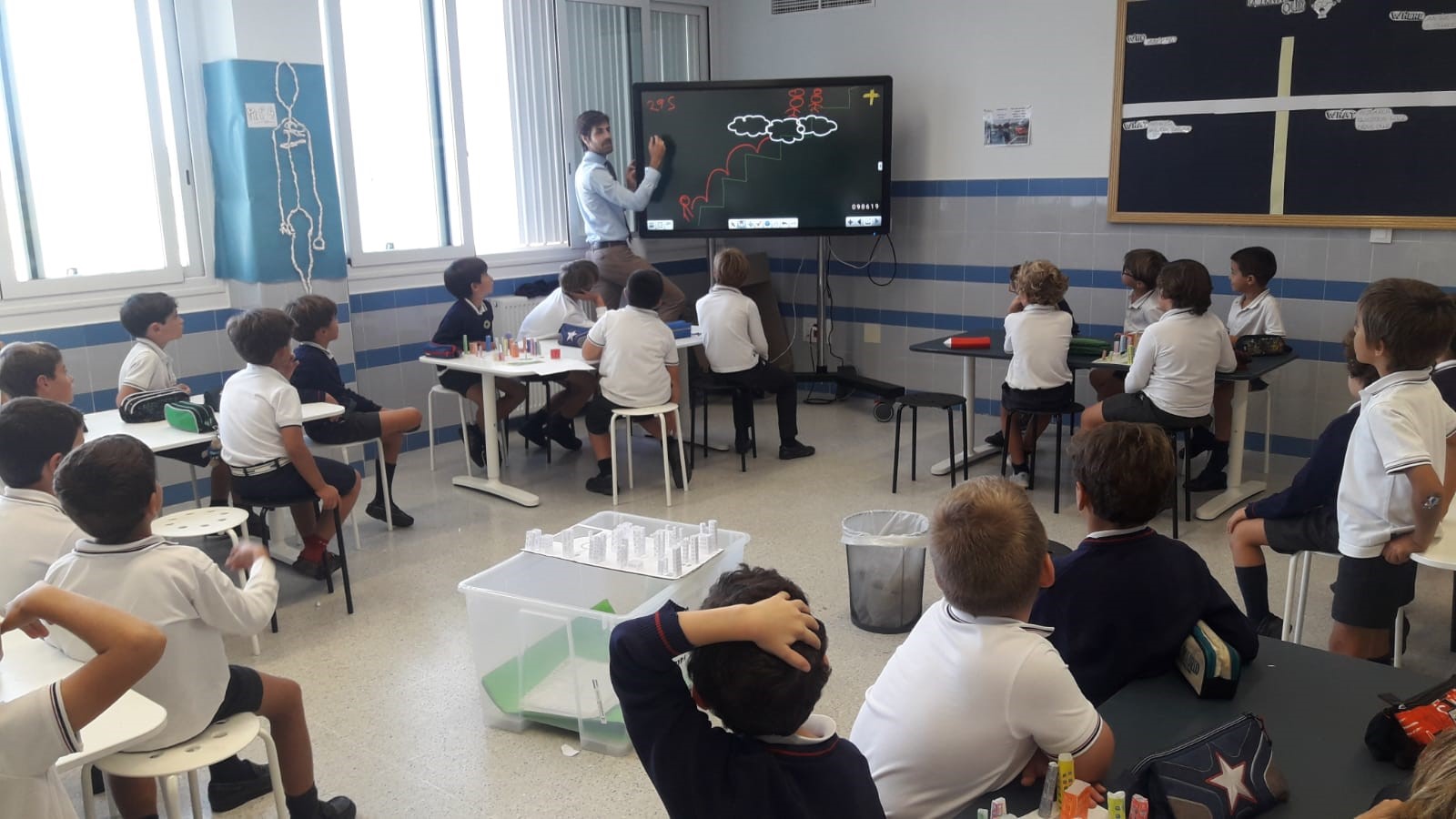
This also means that each classroom has a mixture of topics up on the walls. In the UK, classrooms tend to be covered in information about the teacher’s subject. A history teacher’s room will be covered in history factoids and knowledge. In Spain, it tends to be a mix of subjects that can be beneficial for students to always have access to the information and resources available for each class.
Students Can Repeat Years
In British schools, it is incredibly rare for a student to repeat the year. However, in Spain, a student who has failed to reach the required necessary level to pass will repeat the year. Students have more autonomy and responsibility for their schoolwork and are evaluated very strictly. These two reasons contribute to why it is more common for students to repeat a year. They must do complete the same classes again, but with passing marks in the company of a new set of classmates.
The only time this happens in the UK tends to be in primary school, for a student born in August who would have been in the year below had they been born in September. As such, especially in secondary classes in Spain (ESO), there tends to be a mix of ages within a single class.
A Combined School
The school I collaborate at covers all four stages of the Spanish education system. This means that essentially, the school combines primary and secondary school (or Elementary school, Middle school, and High school for the Americans out there).
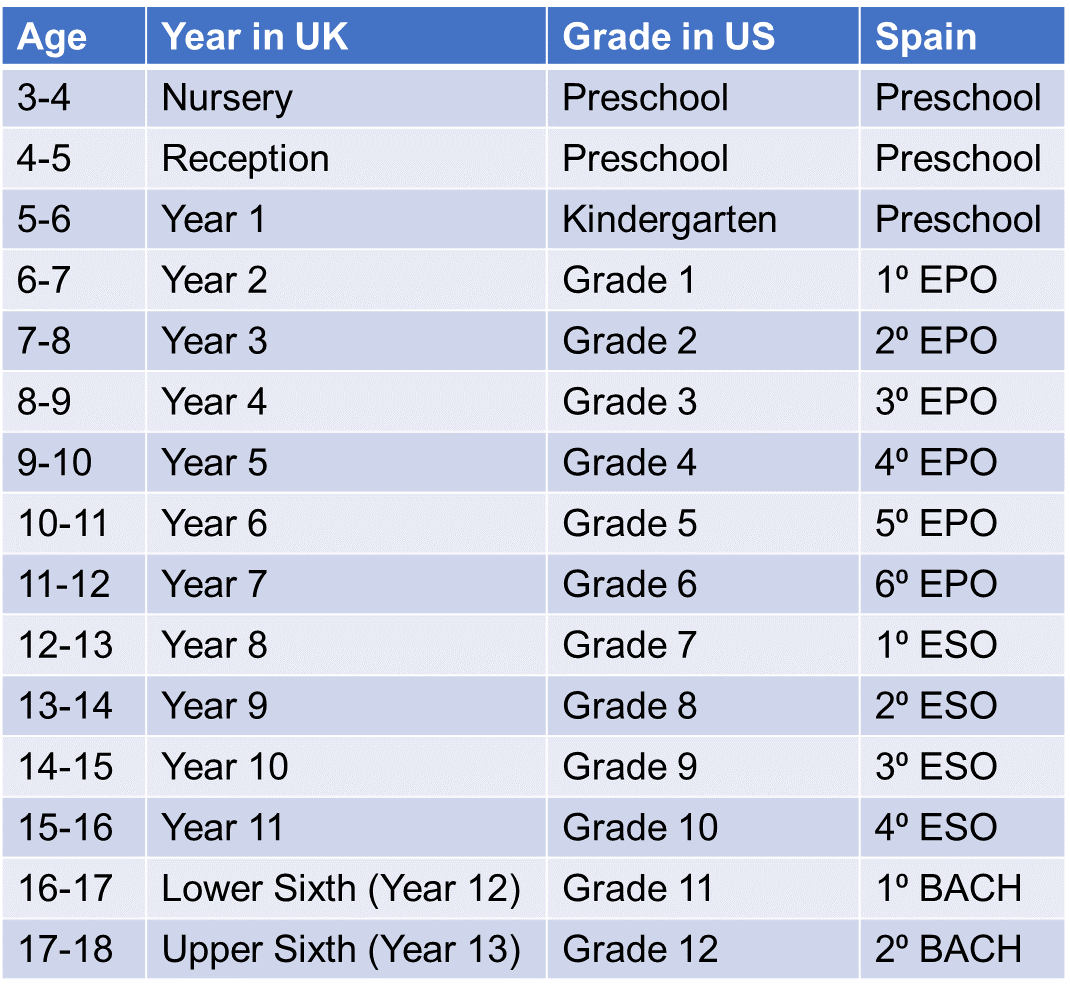
The spread of ages in each of the different stages
I like this approach a lot, as it means I get to interact with students of all ages. The younger students tend to be bubblier and more fun, whereas I can have much more in-depth conversations with the older kids.
The School Timetable
In my school, the day begins at 9 am and finished at roughly 4:40 pm. There are six scheduled lessons, the four lessons before lunch are 55 minutes long, the two lessons after lunch are 50 minutes long. The reason that the school day is so long is that students have a lot of break time, approximately 2 hours. The day starts with 2 lessons, followed by a break. This break lasts around 30 minutes, students tend to eat a snack and play in the playground. Afterward, the students have two more lessons, and then an extended lunch break of around an hour and a half. They have two more lessons after this, and then the school day finishes.
Most Spanish schools follow a timetable like this one, with lessons from about 9 am to 4 pm. However, there is an increasing number of schools that do not have a lunch break and finish classes at 2 pm.
School Transport
Most schools provide a subsidised or free bus service to take children to and from their homes in outlying regions. At my school, most children take the school bus and there are roughly 10 different bus routes.
Finding out whether your school offers a coach service should be one of the first things you do when arriving in Spain, as it can influence your decision on where to live. It is up to you to decide whether you want to live closer to the school or closer to the city centre (if you are living in a city).
The Cafeteria
Although my school had a cafeteria, this is not always the case. Many students in Spain go home to eat lunch. At my school, all the students bring in their own snacks for their morning break. Some of them also bring their own lunch, but the majority are fed in the cafeteria.
The teachers have their separate cafeteria and are also fed by the food the school provides. I was lucky in that my school provided me with a morning snack and lunch free of charge.
School Sports are Less Important
In my British school, sports were incredibly important. Being on a school team meant daily practice, tours in the summer, and weekly matches where parents would gather and watch. While they do have some sports teams at my Spanish school, they are valued slightly less. Any student that has a passion for their sport will play for a club team outside of their school.
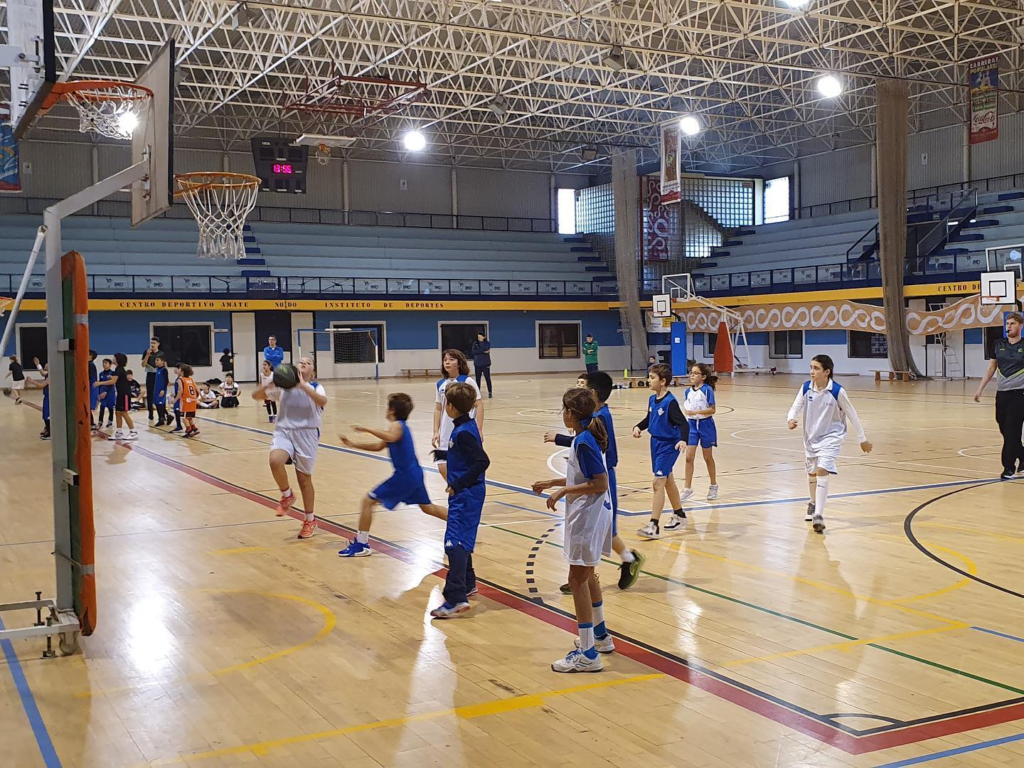



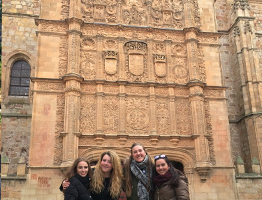

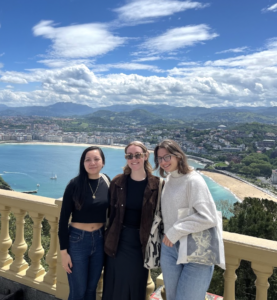





One Response